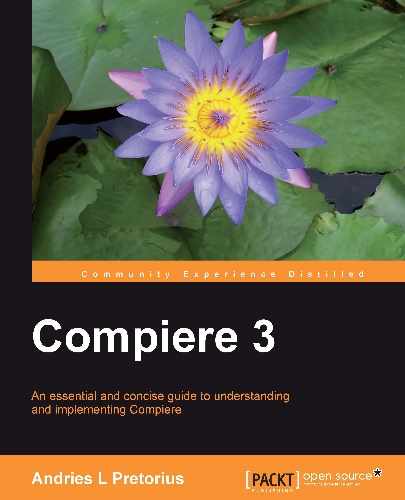In its simplest form a business entity is the legal or otherwise manifestation of the entrepreneurial spirit of human beings. Information is required in order to record, control, analyze, and predict the entrepreneurial process. Information systems supporting these activities have greatly evolved in the last 40 years from the very basic to the very complex. By its very nature information systems have been required to constantly change to keep up with the entrepreneurial spirit. ERP (Enterprise Resource Planning) systems as they have come to be known evolved from the eventual requirement to have an integrated system across the entire business process (end to end).
Celebrating and maturing from an open source project to a leading edge competitor in the ERP space, Compiere offers best-of-class functionality on a model-driven architecture, the latest enterprise platform-independent web technologies (GWT, Java, JBoss, Oracle / Postgress), while maintaining open standards, value, flexibility, scalability, and most of all an integrated ERP platform that can be extended with ease.
Compiere is widely regarded as the top Open Source ERP and its name was derived from the Italian word for to fulfill / deliver.
In this book we will introduce you to understanding Compiere functionality by exploring the different essential business processes. We will cover the setup, the processes of Sales, Purchasing, Inventory, and Financial Management as well as the advanced aspects like Workflow, project planning, and migration.
Every chapter is illustrated by example so as to facilitate quick, concise, and practical reading. The book's aim is to take your basic knowledge of the ERP environment and ensure that you gain a practical understanding of the critical functional aspects during the process of evaluating or implementing Compiere.
Chapter 1, Evaluating the Compiere System aims to highlight to the reader aspects related to evaluating the Compiere ERP system as well as the differences in product editions.
Chapter 2, The Initial Compiere Setup introduces Compiere terminology as well as initial setup of the organizations, account elements, documents, and users.
Chapter 3, Customers and Sales Process deals with the aspects of setting up your customers and detailing the sales process from Sales Order to Invoicing.
Chapter 4, Product and Material Management explains the concepts of a products, price lists, and discount schemas. It also illustrates concepts of Material Management, which controls the aspects of quantity through standard warehousing control.
Chapter 5, Procurement Management covers Procurement Management with regards to the processes from Request for Quotation, through Purchase Orders, Invoicing, and Material Receipt, to the Payment of vendors.
Chapter 6, Compiere Financial Management… aims to explain the accounting and financial aspects of the system as in the end businesses must rely on accounting information.
Chapter 7, Advanced Aspects covers an overview of the Application Dictionary (AD) as well as examples of creating custom fields and setting up a basic document workflow.
Chapter 8, Project Planning for Go-live and Beyond highlights the aspects related to project planning from people, functional, and technical points of view. We will also relate aspects regarding post-go live and migration.
